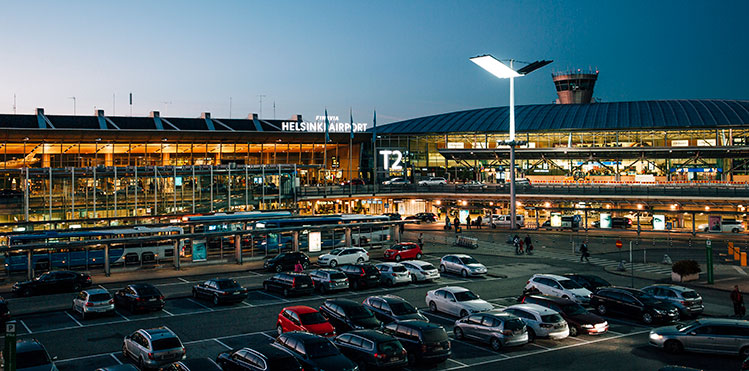Guy Barnes, Director Strategic Accounts, and Pauline Oliver, Business Development Manager of IDeaS, interviewed by Marta Dimitrova.

Guy Barnes, Director Strategic Accounts, IDeaS, will discuss strategies to optimise parking revenues in the airport commercial space during this year’s ACI EUROPE Airport Commercial & Retail Conference.
Ten years ago, Uber and Airbnb did not exist, yet it is hard to imagine a consumer landscape without them today. The demand for traditional taxis and hotels has not been eliminated, yet internet-based businesses have considerably disrupted the travel industry. Customers are more empowered than ever to shop around and make informed travel and booking decisions. With 40 million riders every month, and a net revenue of more than $1 billion, Uber has successfully educated a global market to book online via its app, pay electronically and accept dynamic pricing, which means higher fares in periods of high demand. During this year’s ACI EUROPE Airport Commercial & Retail Conference, Guy Barnes, Director Strategic Accounts, IDeaS, will discuss strategies to optimise parking revenues in the airport commercial space. “The hospitality industry has worked this way for many years, and now airports around the world are seeing the value in a similar approach to grow non-aeronautical commercial revenues through parking,” he explains.
Non-aeronautical revenue is, indeed, significantly important to an airport’s long-term revenue growth. According to the 2017 ACI Economics Report, non-aeronautical revenue continues to constitute 40% of the €152 billion in global airport revenues. 23% of that revenue comes from parking, making it clear that developing a commercial strategy to drive parking revenue can be a turning point for airports.
As airport margins come under increasing pressure due to changing airline business models and increasing operating costs, non-aeronautical revenues, especially those from parking, bring opportunities through higher margins and direct influence from airport commercial directors. With the expected doubling of global passenger traffic to 14 billion by 2029, the need to continue expanding parking infrastructure is essential. “There are, however, significant challenges to this,” says Pauline Oliver, Business Development Manager, IDeaS. “We are seeing modal shifts from cars to greener transportation options, with airports and governments supporting and promoting these initiatives. Passenger dwell time is reducing, and thanks to the internet, travellers are more price sensitive and savvy about the travel choices they make.”
The emergence of autonomous vehicles also has the potential to negatively impact on parking revenues, so the industry must work hard to stay competitive.
Many airports see a competitive advantage in using data science and analytics to forecast true demand and use that demand to sell car park spaces at optimal rates determined by consumer price sensitivity. Selling through an online channel is key. “Having a platform to sell parking spaces online is important, but the application of intelligent analytics and algorithms is what leads to optimal pricing and, as a result, improved revenue,” Oliver explains. “Automation in pricing decisions takes this a step further and achieves more for your bottom line. Because IDeaS Car Park Revenue Management System is an automated decision system that takes the many variables of a car parking business into consideration, it can integrate sophisticated analytics into existing selling systems to maximise productivity and profitability.”
At the heart of this approach isn’t just big data, it is the right data and intelligent analytics. Available today in an airport’s technology environment is an ongoing stream of highly valuable data that, with the right models and tools, can inform pricing decisions and revenue strategies.

Helsinki is the latest airport to implement IDeaS’ dynamic pricing model to increase its commercial revenue through parking. Photo: Finavia
Making this transformation to a dynamic pricing approach can mean a new way of working, and IDeaS is committed to forming solid partnerships with clients for long-term success and growth. One of the latest airports to implement new revenue technology in airport car parking is Helsinki Airport. With more than 19 million passengers and getting ready to serve over 30 million passengers, the airport has implemented a dynamic pricing model, to ensure it makes the most of its commercial opportunity through parking.
Although revenue management is a relatively new discipline for airport parking, its impact is significant and is transforming the way airports yield their parking inventory. IDeaS is already looking ahead to the future, beyond demand-based, dynamic pricing for each car park or customer segment. “We see the opportunity to personalise price even further with the right technology in place. Providing parking customers with more choice and pricing that best meets their individual preferences is empowering and adds value. This approach ultimately drives increased revenue,” Oliver concludes.







